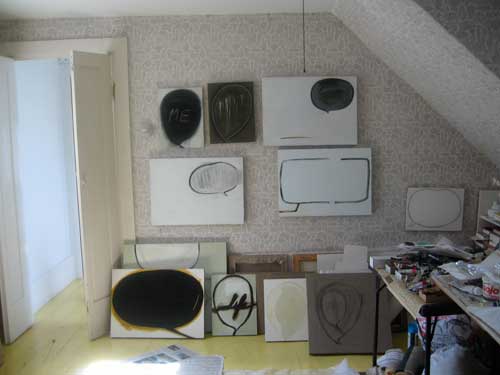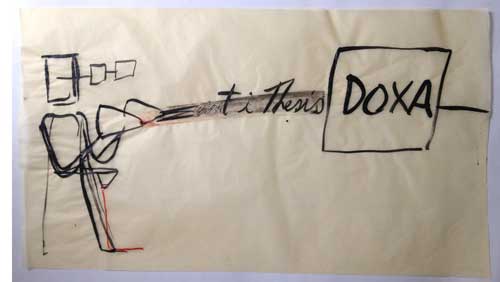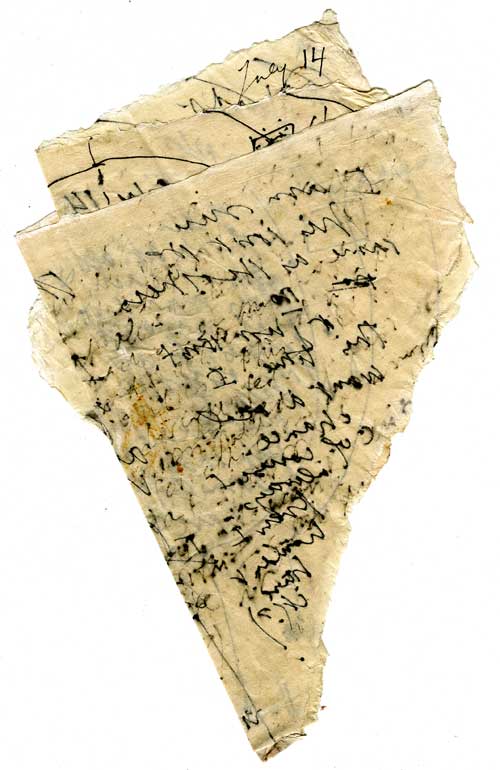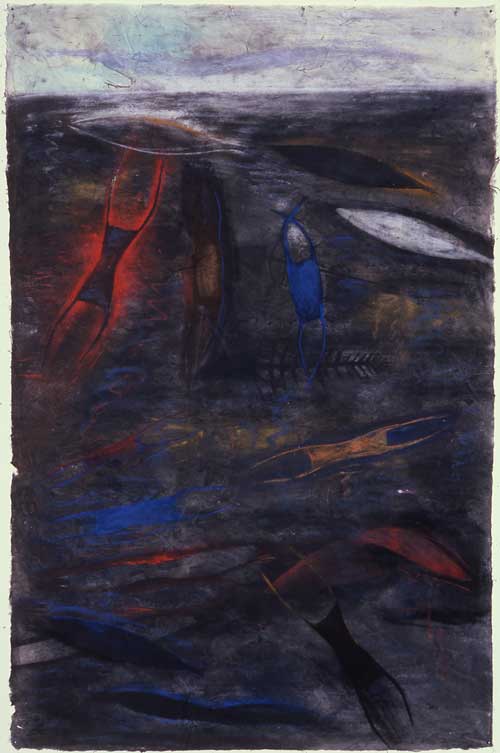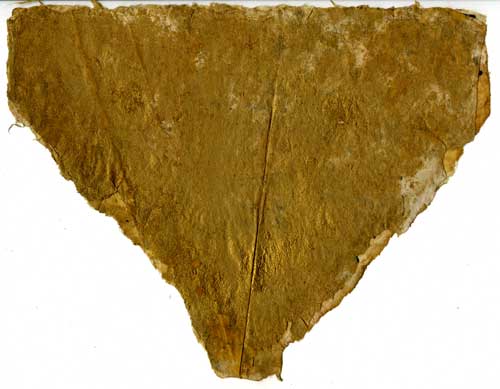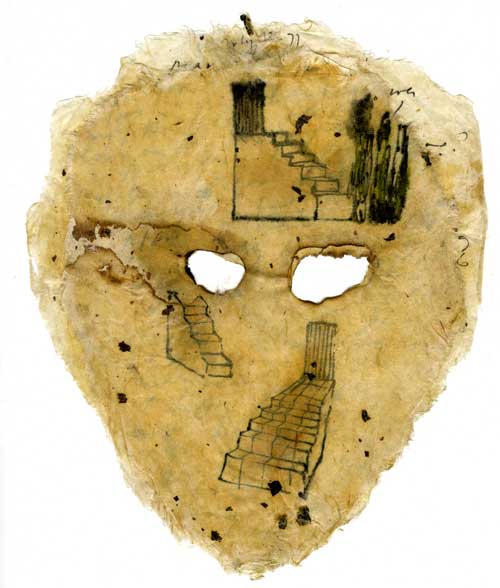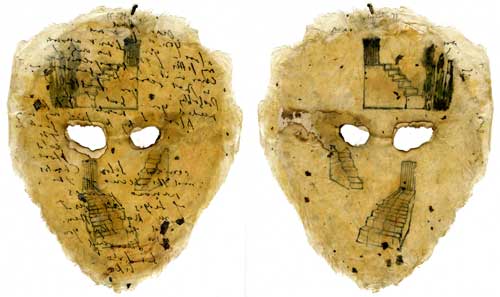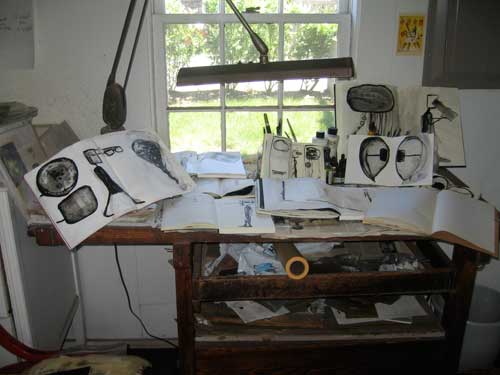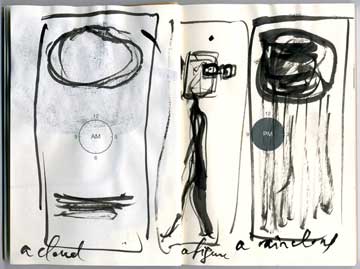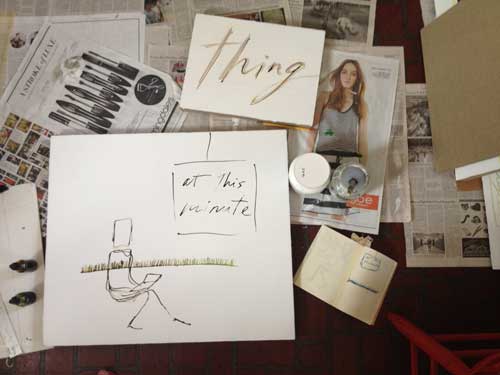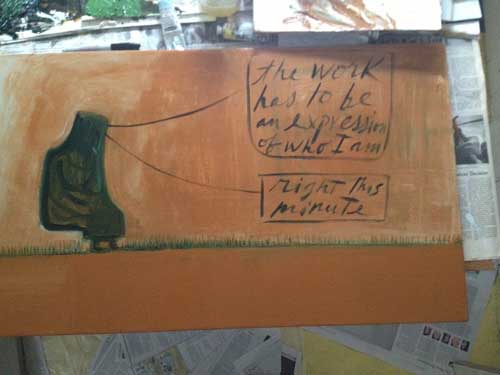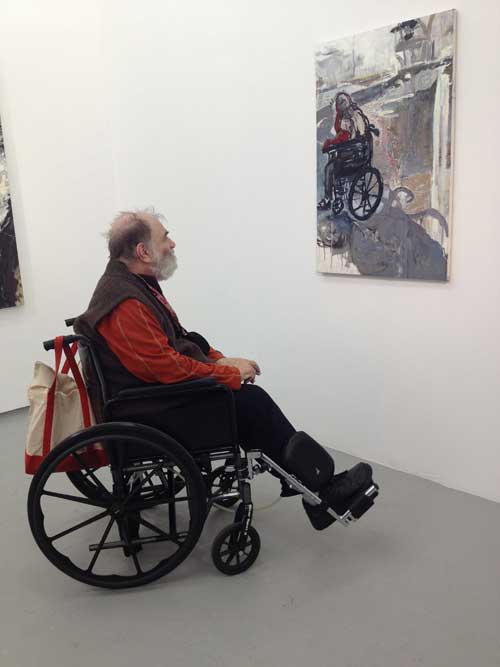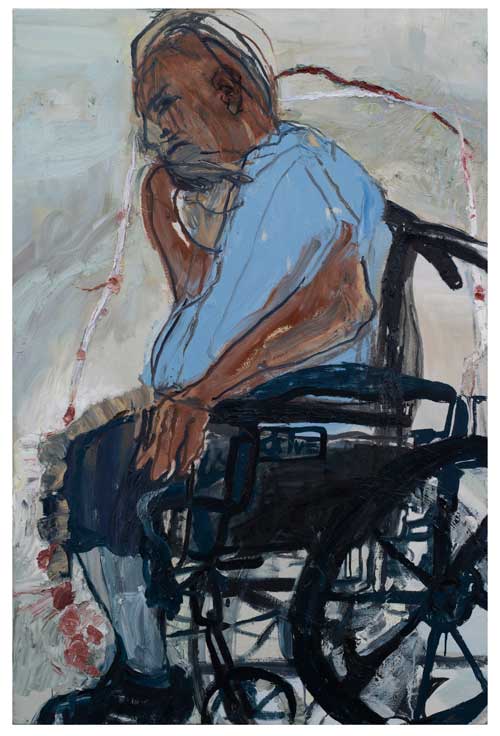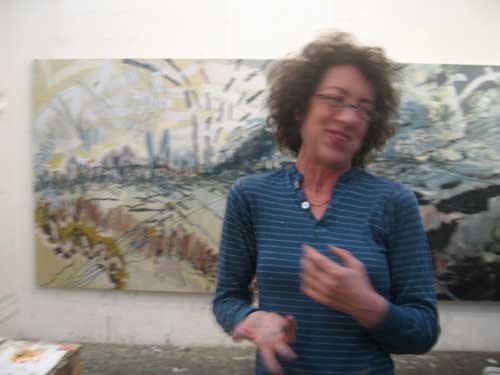July 16, 1974
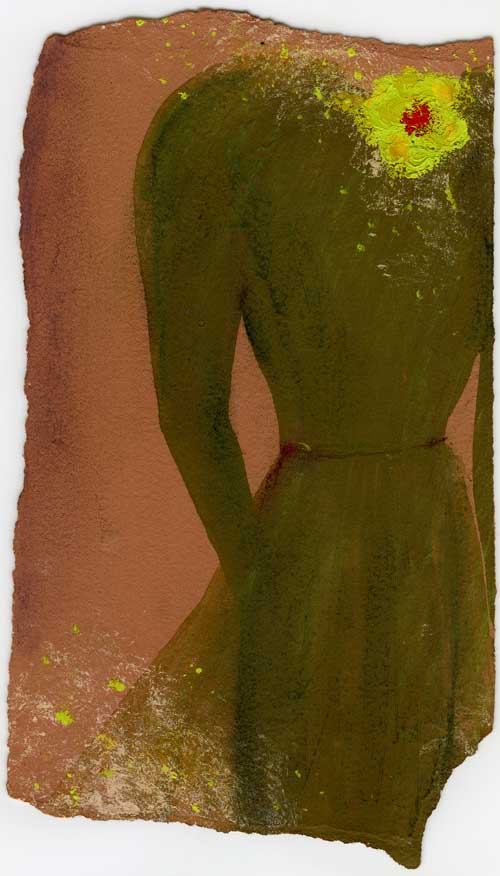
After I had lived at my loft on Lispenard Street for about 15 years I finally unpacked the last two boxes I had brought with me when I moved back to New York from Halifax, Nova Scotia where I had been teaching at NSCAD. I needed the room in my closet and I couldn’t remember what was in the boxes. Whatever it was, clearly I hadn’t missed it. Inside one box was a wrapped package and inside that package was an album of page size (about 12 x 9 inches) gouache paintings on paper, combining images of birds and flowers taken from bird books and flower catalogues annotated with poetic language, by which I think I mean, a few words, personal but not specific enough to be political. The ubiquity of this type of imagery as a trope is one that I have written about in my essay “Trite Tropes, Clichés, and the Persistence of Styles,” where I admit my own early contributions to the genre. This was the work to which I devoted my first winter out of graduate school and I had completely forgotten its existence. Lesson #1: we are increasingly so concerned with producing a recognizable, stable, packaged product by the last semester of graduate school that the model of search as part of artistic development seems ridiculous, impractical, dangerous even. But people are still people and what an artist deeply cares about and may devote a year of life to may end up being not that important, may end up not amounting to much, although what can seem a failure at one moment at a different time can appear important.
At the end of my first year out of graduate school my favorite teacher, Stephan Von Huene, had come to New York and visited my studio. He had been extremely supportive of my work in graduate school while encouraging experimentation and the embrace of accident. Now he was clearly upset with the direction I had taken, he felt I had gone off track. Thinking back on it today I think he felt I had lost some of the charm of a personal and feminist narrative and gotten mired down in a gloomy subject statically presented. The strange thing is that I almost immediately forgot what exactly he had said to me, partly because as he spoke I was already converting his comments into a plan to change my work based on my interpretation of what he had said, and, Lesson #2, that pretty much describes the imperfect art of teaching, where as long as some transaction occurs that moves the game forward it doesn’t really matter if you understand each other exactly.
In the weeks after his visit I decided to bring into my work the image of the empty dress. My reasoning as far as I can recall was very simple: I had always been interested in clothing, I had a few beautiful books on the history of costume, which due to the fortuitous importance of painting and drawing as the only means of recording visual appearances for centuries meant that I was looking at dresses and costume in great paintings from art history which was one among many factors and influences that kept me looking at painting when I was in my early teens even when I thought I was doing something else. I learned through imitation of New York Times fashion illustrations how to draw quick fashion sketches in pen and ink which kept me drawing, and I had come out the other end of my teens doing gently satirical, autobiographical small gouaches in which female figures were often elegantly dressed in a 1920s style of clothing in a Rajput and Sassetta influenced, Hairy Who inspired style and scale with a feminist impulse which became more focused at CalArts. So I returned to the image of the dress, now empty of the extra narrative element of the figure, and quickly decided to tear away the ground–I’m pretty sure that had something to do with something Stephan said, maybe that I wasn’t doing much with the ground so I got rid of some of it.
The dress is long since a trope of feminist-inspired art but at the time it was not that prevalent, and there was not so much of a leader/follower situation as that it was a moment when a range of subjects and materials from women’s daily lives and personal experience were newly available to women artists of a range of age and experience. That summer I worked on small paintings of empty dresses as representative of the curious phenomenon of femininity as a role that women put on and take off. Although elements of the earlier work have remained and recur in my work–landscape, figure, the book of pages, the use of language–at the time these empty dresses felt like the first work I did out of graduate school that I could call my own.
*I’m going to cheat a little here: this work led to Dress Books in 1977 where person-sized rice paper dress shapes had pages covered with language, so that a viewer could stand, gonad to gonad as it were, and try to read the figure of the woman:
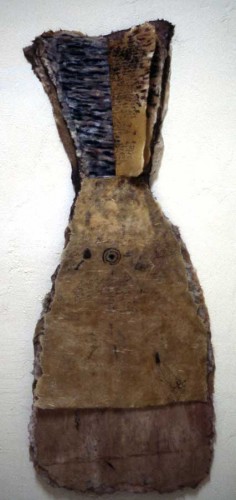
Mira Schor, Dress Book (back), 1977. Ink, dry pigment, Japan Gold Size on rice paper, c. 63 x 24 in.
And the dresses from the summer of 1974 led also to works from the summer 1978, more abstracted, and also more decorative and flirtatious dresses:

July 16, 1984

Mira Schor, The Odd Pod, 1984. Gouache, dry pigment and medium on rice paper, 72 x 36 in.
In 1984 I worked on gouaches on very large sheets of rice paper: some were part of a series of calendar pieces for the momentous year 1984–here was the one made during July here in Provincetown,
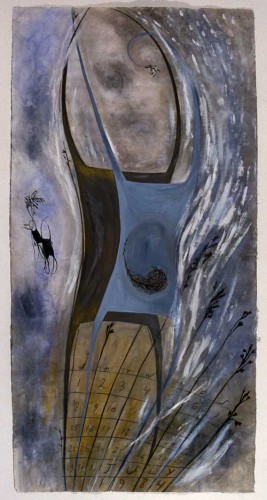
Mira Schor, 1984 Calendar, July, 1984. Dry pigment, gouache, and medium on rice paper, 72 x 36 in.
Many of the figures were taken from forms that I was interested in, found in nature, forms which in themselves had a figurative, anthropomorphic element, primarily skate egg cases and milkweed pods. Odd Pod was a type of seaweed I found on the beach.
I had pushed the media I was working on, rice paper, dry pigment, gouache to the limits of their capabilities in terms of size. At this point I began to work in oil on canvas and linen. It was at this time also that I began to write about art and Susan Bee and I founded M/E/A/N/I/N/G, and in order to write about contemporary art, I also began an immersion in contemporary art and feminist theory and some of the critical disciplines which were of great importance to art discourse. I looked back on the works from the 70s and early ’80s, particularly these landscape-based works but also even the feminist works such as the Dress Books–though I stubbornly continue to feel these are epitomic seventies feminist artworks despite the fact that they have not as yet entered that closed history–as part of a dream world, one that the intellectual and aesthetic politics of the 1980s intentionally undermined, and, though I gained a great deal from the specific kind of coming to consciousness in my encounter with such texts during the contentious and bracing period of the ’80s, I also felt the loss of that dream world.
Reminder: I will return to posting on art, culture, and politics soon enough but I hope my subscribers and readers will allow me a slight summer detour, a project of posting works done on specific summer days from different years, begun July 13. Because the desire to do this arose on the spur of the moment, after I had left New York and most of the records of my work, I’m going by works that I have on my hard drive where the work’s date is specifically included in the file name, making this a fragmentary impression of the work, which for anyone interested in seeing more, is sketched out very schematically but with a more comprehensive and traditional chronology on my website and I may cheat later this winter and add more relevant works which have specific dates.

